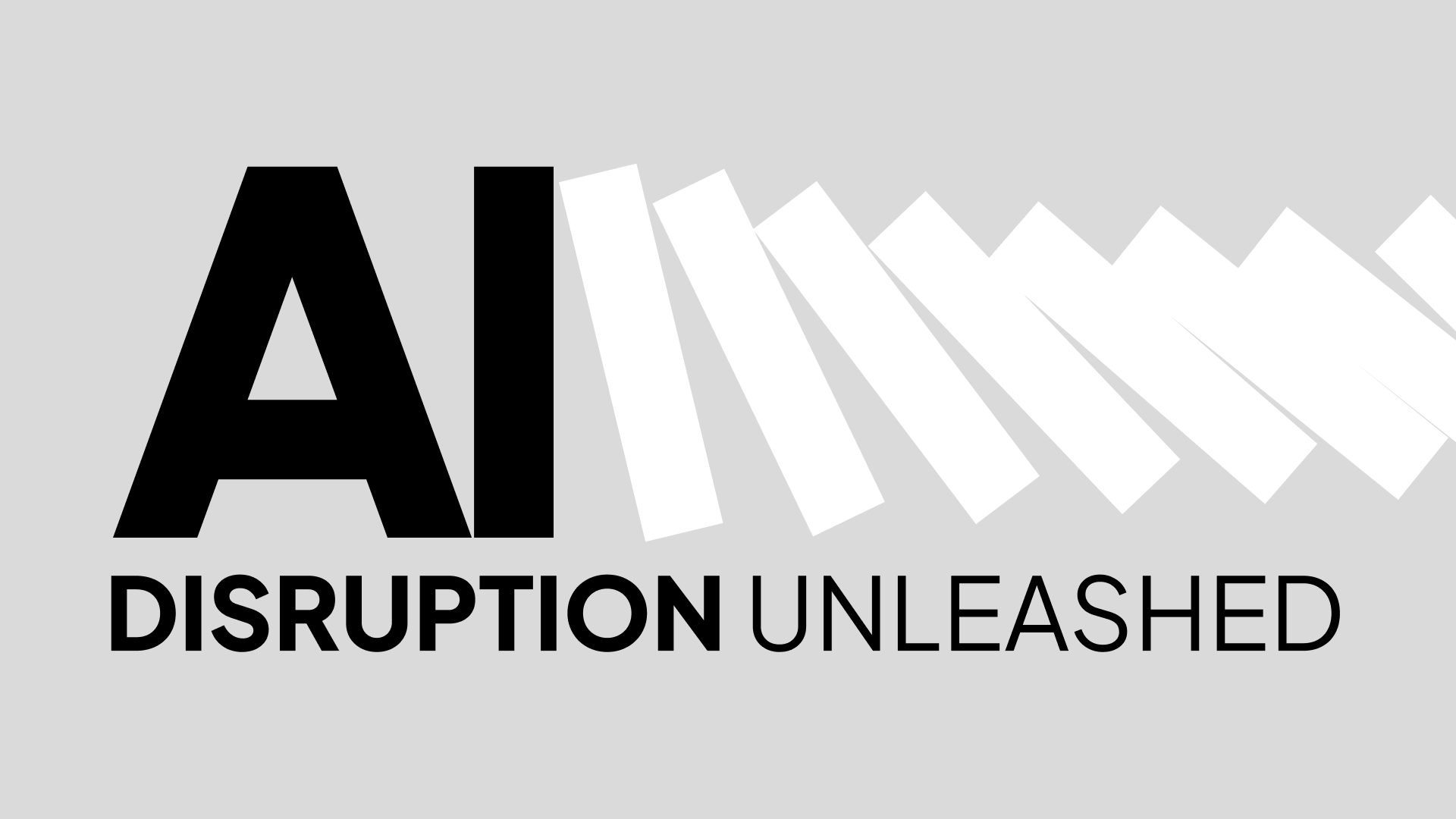For enterprises, the critical question is not ‘if’ but ‘how’ to integrate AI, LLMs, and Generative AI effectively into core operations to stay ahead of the competition. Moving beyond experimentation requires a bold strategy—one that challenges norms and redefines how AI can deliver value.
Tech adoption follows a predictable path. Unleashing the disruptive power of enterprise AI requires us to redefine the rules of adoption, adapting established models into something new.
The Five Stages of AI Maturity
Each stage represents a milestone in the journey toward a fully AI-driven enterprise, highlighting key areas of growth and the strategic shifts required to stay ahead. Understanding these stages helps leaders see not just where they are, but where they need to go to achieve true transformation.

Stage 1: Initial AI Experimentation
In the Initial AI Experimentation phase, organizations take their first cautious steps into AI. These early projects are often isolated and lack alignment with broader goals, but they help leaders understand what AI can do. This phase is crucial—it shows whether AI is a tool worth expanding or just a passing curiosity. Most efforts at this stage are proof-of-concept initiatives, testing AI’s potential before any real commitment is made.
Characteristics:
- Small, siloed teams driving isolated AI projects.
- Experiments are often disconnected from core business objectives.
- Lack of an overarching AI strategy.
Actions to Progress:
- Build AI Awareness: Engage leadership to understand the potential and risks of LLMs and Gen AI.
- Identify Business Use Cases: Seek meaningful opportunities where AI can solve real problems.
- Secure Initial Resources: Allocate budgets and resources to establish AI as a potential future pillar of business strategy.
Stage 2: AI Adoption and Integration
The second stage, AI Adoption and Integration, is where AI becomes more visible across departments. Deployment starts driving efficiencies, but often without cohesion, leading to siloed implementation. Organizations begin integrating AI into workflows—like leveraging LLMs for customer service or data analysis—without yet achieving a unified approach.
Characteristics:
- AI is adopted by multiple departments but lacks integration across the organization.
- Focus on initial return-on-investment (ROI) from department-specific AI efforts.
- Siloed development, leading to a fragmented AI landscape.
Actions to Progress:
- Create a Unified AI Strategy: Develop a cross-functional AI strategy aligned with core business goals.
- Foster Collaboration: Share AI insights and avoid redundant development across departments.
- Standardize AI Tools: Start unifying technologies and approaches to streamline the AI landscape.
To transition to the next stage, enterprises must break down silos and begin developing a cohesive AI vision that aligns with overall business objectives.
Stage 3: AI as a Strategic Driver
In the third stage, AI becomes a Strategic Driver. AI moves beyond isolated efforts and becomes embedded in the company’s core direction, with executive leaders fully backing its use. It shifts from being an experimental tool to a strategic asset that drives key decisions and future growth.
Characteristics:
- A unified AI vision that has executive-level sponsorship.
- AI integrated into core systems, enhancing key business areas such as customer engagement, supply chain, and analytics.
- A culture that values data-driven decisions and AI insights.
Actions to Progress:
- Invest in Scalable Infrastructure: Upgrade data storage and processing capabilities to support extensive AI applications.
- Upskill the Workforce: Invest in training programs to improve AI and data literacy across the organization.
- Implement AI Governance: Develop frameworks to manage AI risk, ethics, and compliance effectively.
At this point, AI is no longer a novelty—it’s a foundational component driving strategic decisions across the enterprise.
Stage 4: AI-Led Transformation
In the fourth stage, AI-Led Transformation, AI becomes central to how business is done. Companies rethink every major process, redesigning them around what AI can do best.
Characteristics:
- Business processes are redesigned with AI at the core, leading to transformation beyond simple efficiency gains.
- AI systems are interconnected across departments, ensuring seamless data flow.
- Models are continuously updated through machine learning and human feedback, promoting a self-improving system.
Actions to Progress:
- Break Down Silos: Establish cross-functional teams that focus on AI-driven solutions.
- Utilize Advanced Analytics: Use AI for predictive analytics to uncover new business opportunities.
- Commit to Ethical AI: Develop and adhere to robust guidelines to ensure responsible AI use.
Stage 5: Zero-Point AI Revolution
In the final stage, AI is no longer an add-on; it is the core of every operation. Companies at this level operate with AI at their foundation, reshaping every process and function to be AI-first rather than adapting old methods to new technology.
Characteristics:
- AI-Native Operations: AI forms the backbone of operations, eliminating legacy processes.
- New Business Models: The organization is pioneering new products and services, previously unimaginable without AI.
- Industry Leadership: The enterprise sets benchmarks for AI adoption, consistently leading market innovation.
Actions to Progress:
- Innovate Relentlessly: Encourage and reward continuous experimentation with emerging AI technologies.
- Build Strategic Partnerships: Collaborate with AI research institutions and startups to stay on the cutting edge.
- Cultivate Organizational Agility: Foster a culture that thrives on change, adapting swiftly to new AI advancements.
At this stage, AI is no longer an enabler but the DNA of the organization’s entire way of doing business.
Where Does Your Organization Stand?
Self-assessment is crucial to determining the right strategy for AI adoption—delaying action now could mean falling behind your competitors. Align your efforts with your organization’s needs and goals to secure your position in an AI-driven future. Consider these questions:
- Do you have a well-defined AI strategy that sets you apart from competitors?
- Are AI-driven insights directly influencing key executive decisions and company direction?
- What strategic investments have you made to build infrastructure and cultivate AI talent?
- How robust are your frameworks for AI ethics, risk, and compliance, and do they foster trust both internally and externally?
Embracing the Future of AI (?)
Where is your organization on this AI maturity journey? What are the bold moves you need to make today to secure your future in an AI-driven world?
Where is your organization on this AI maturity journey? What are the bold moves you need to make today to secure your future in an AI-driven world?
Authored by Arun Balakrishnan





